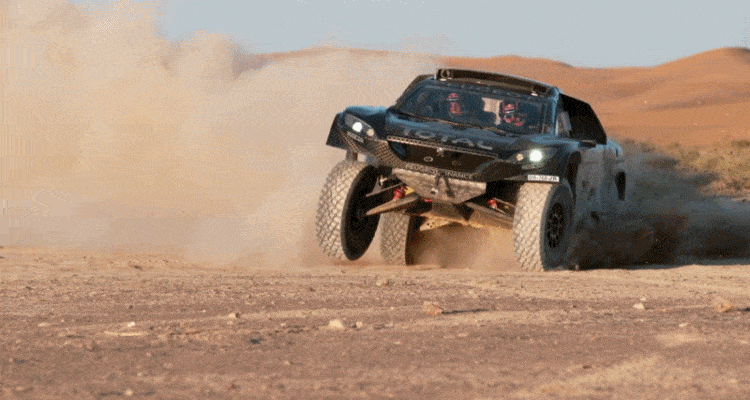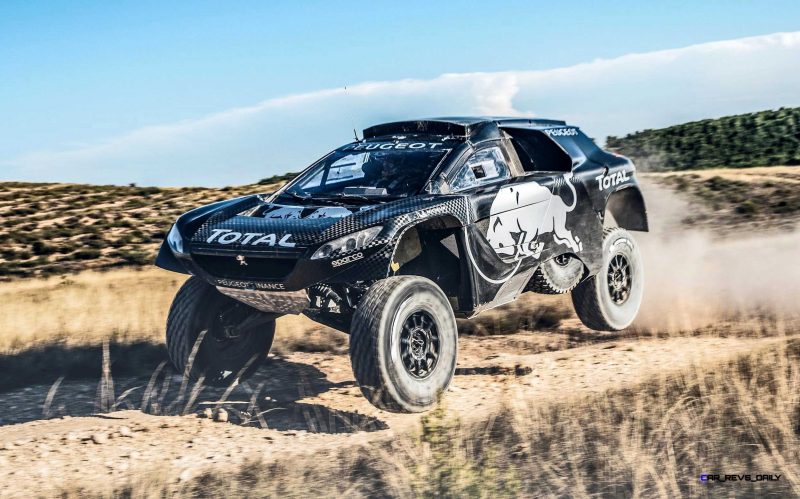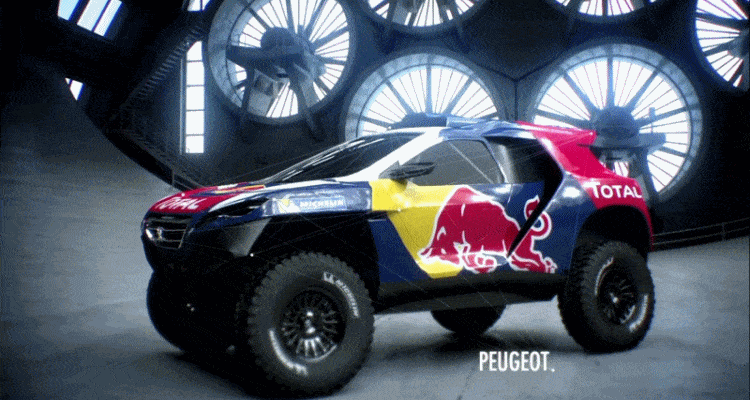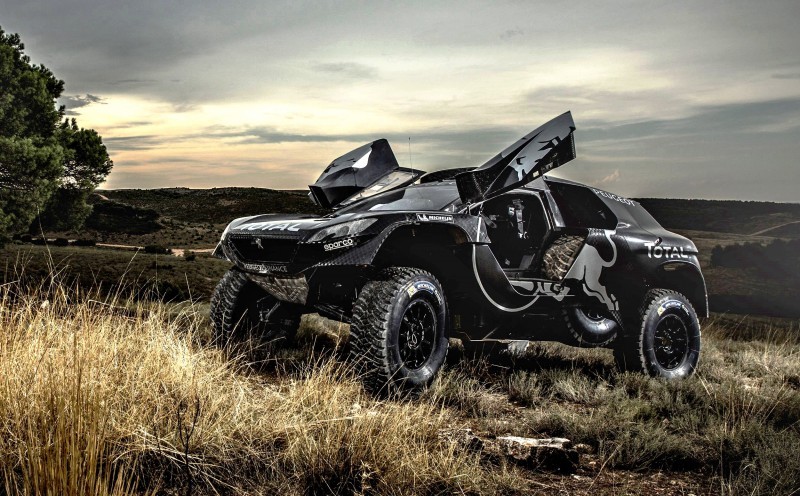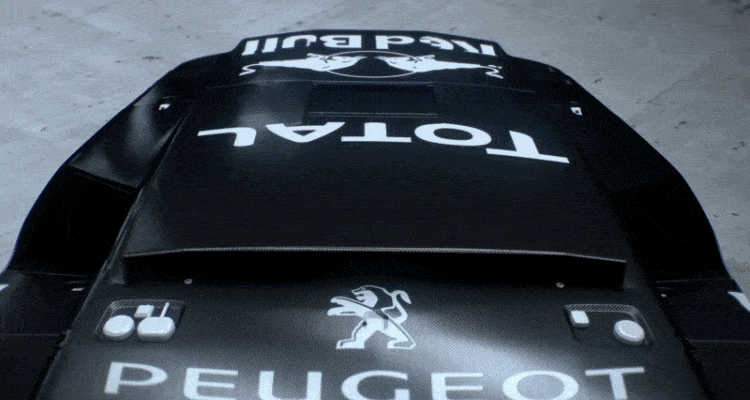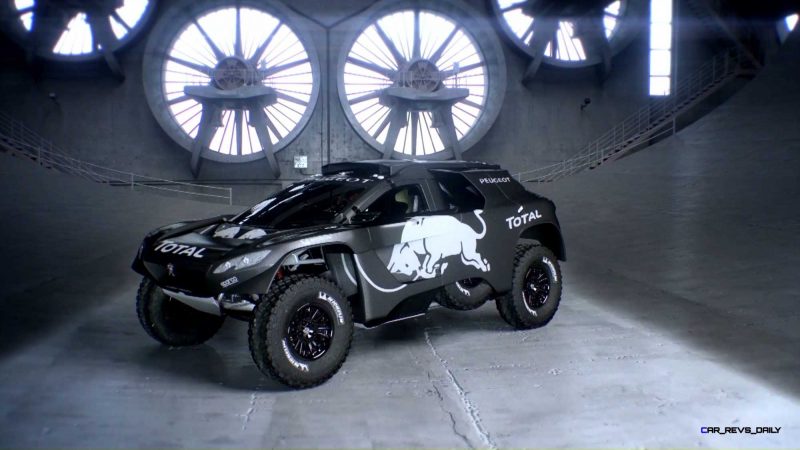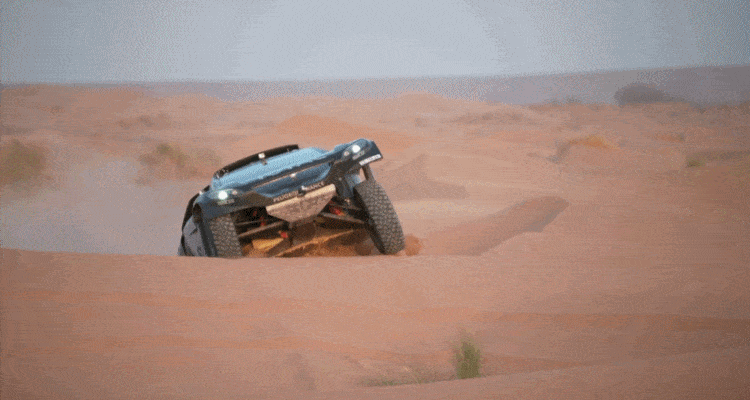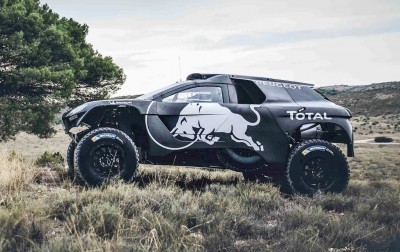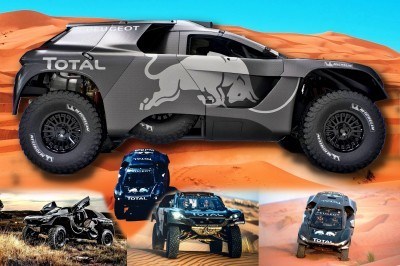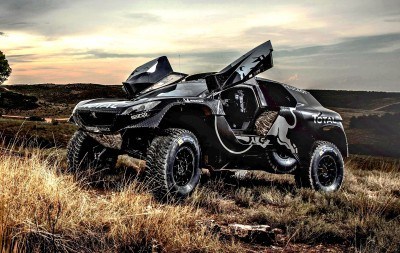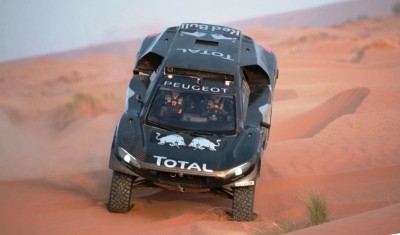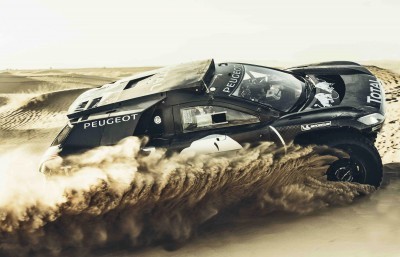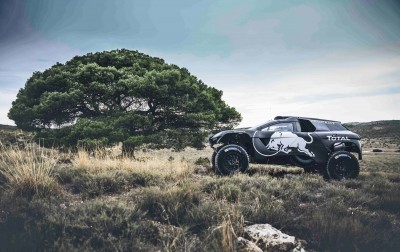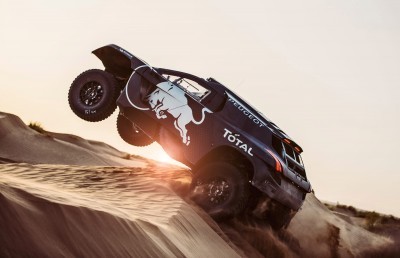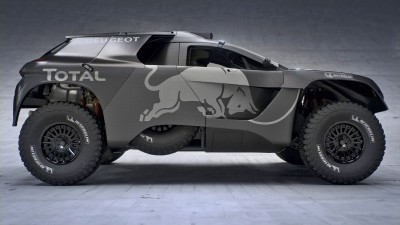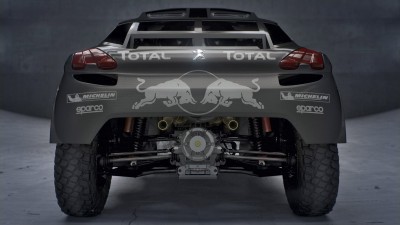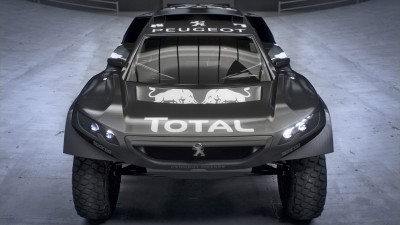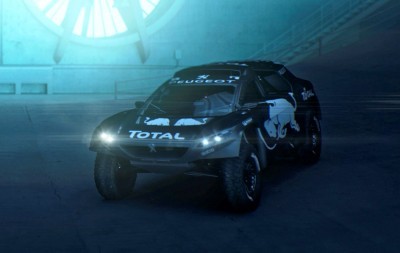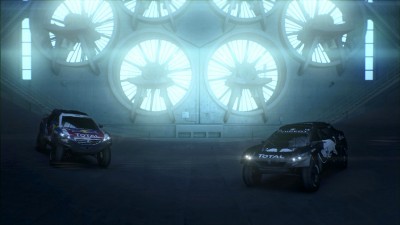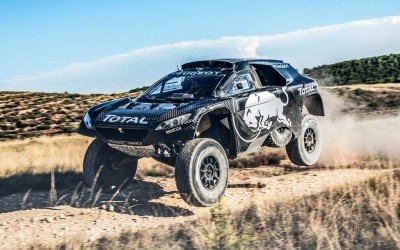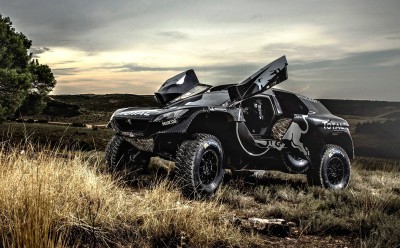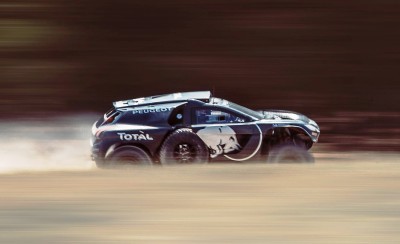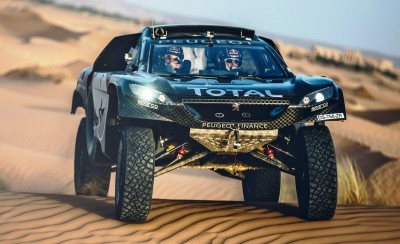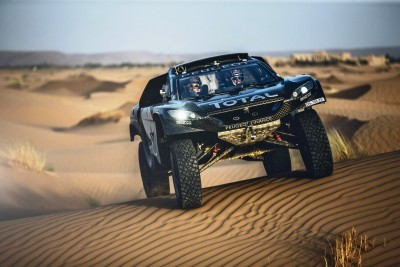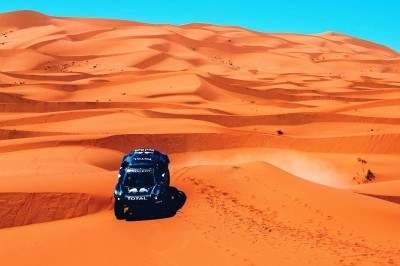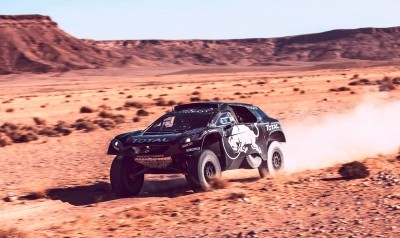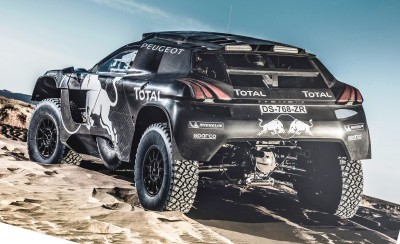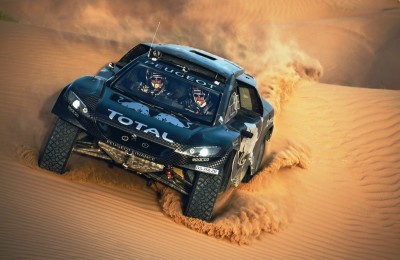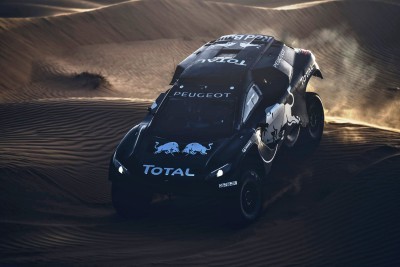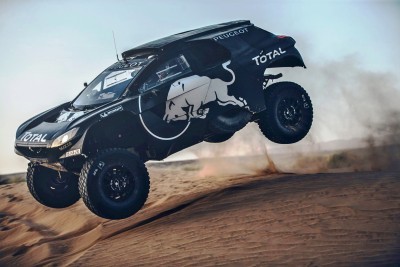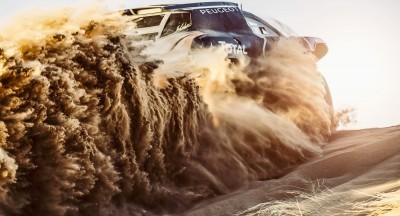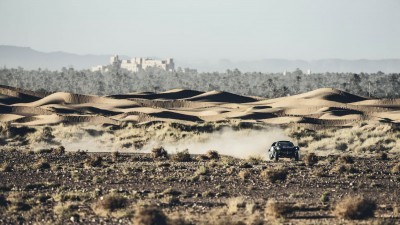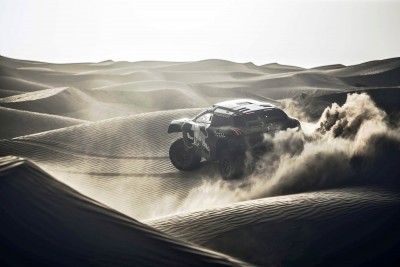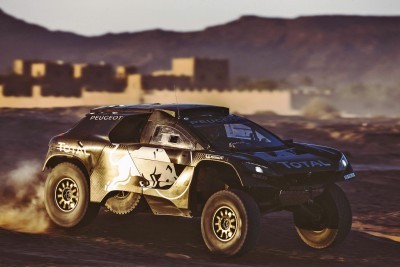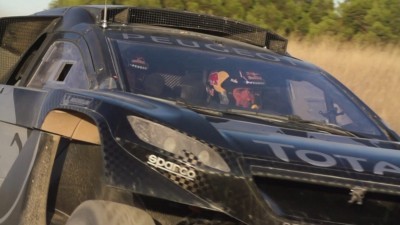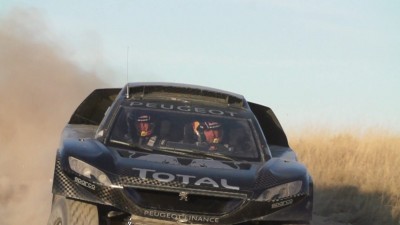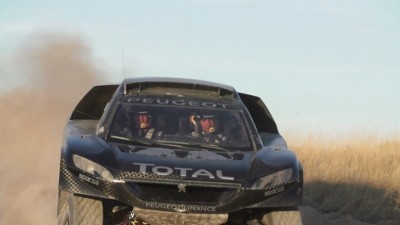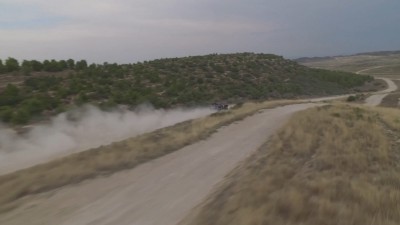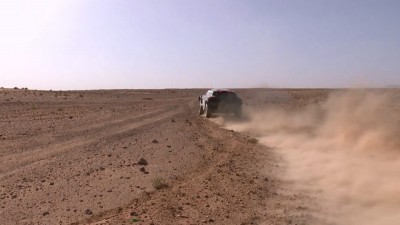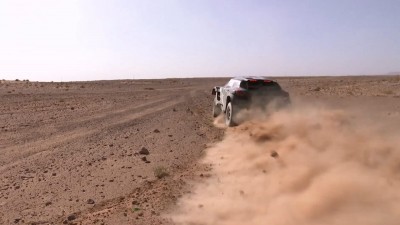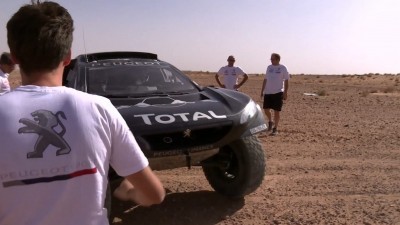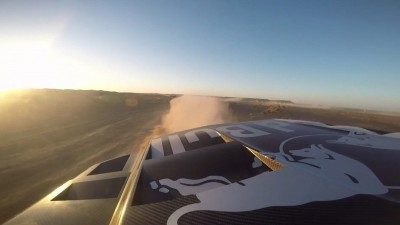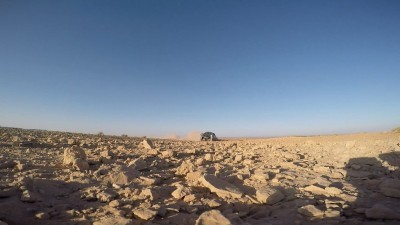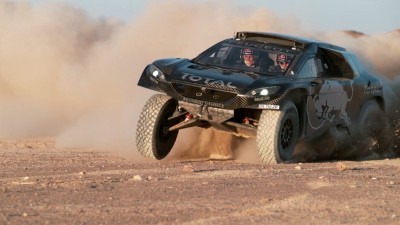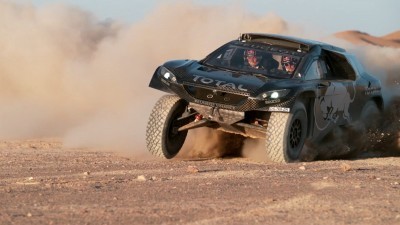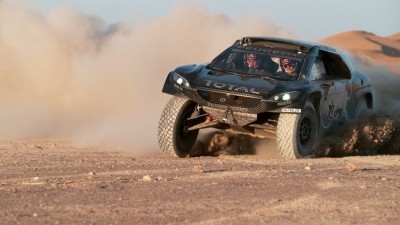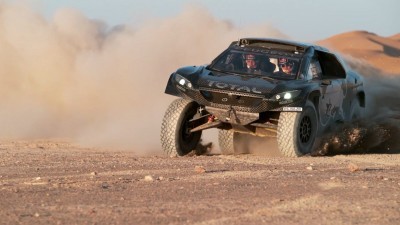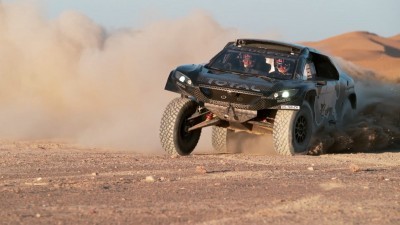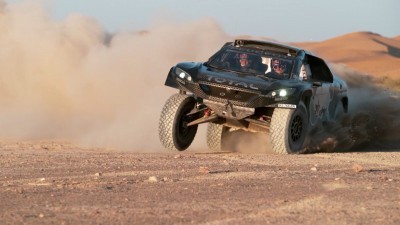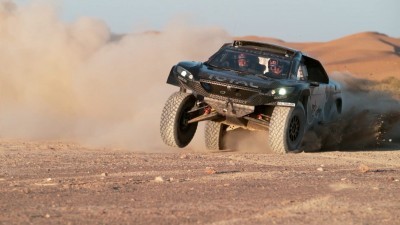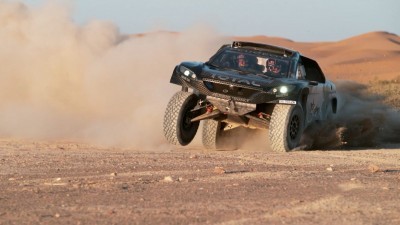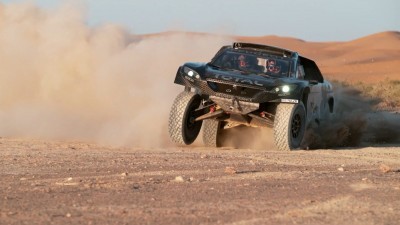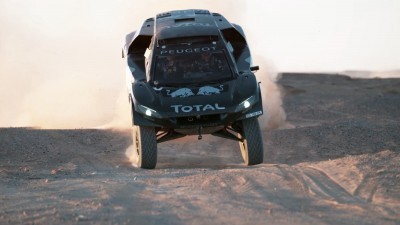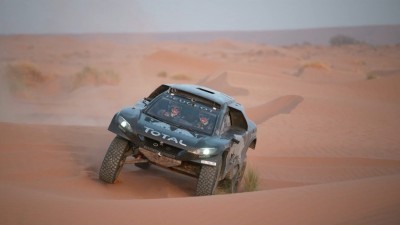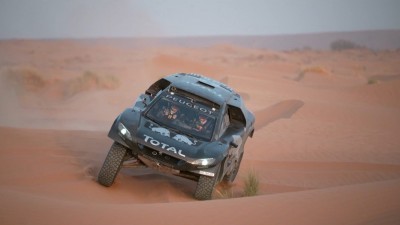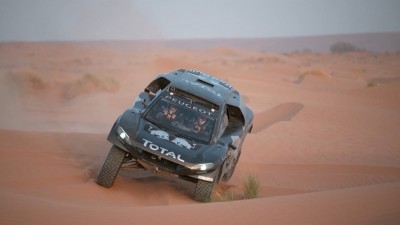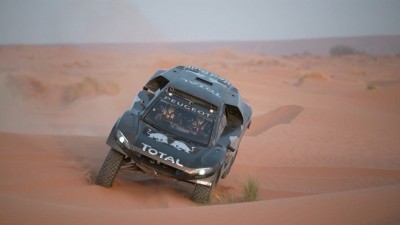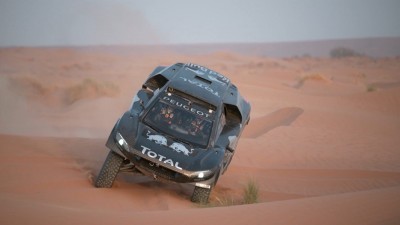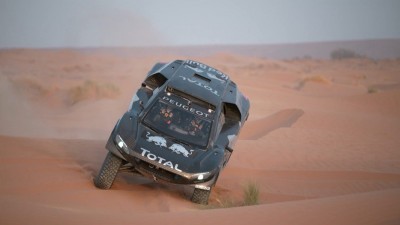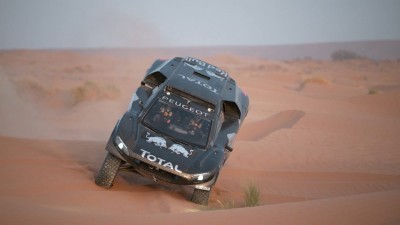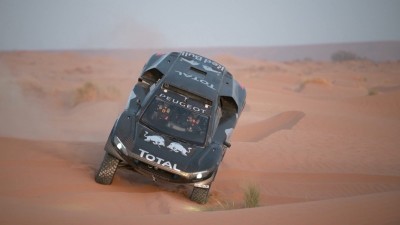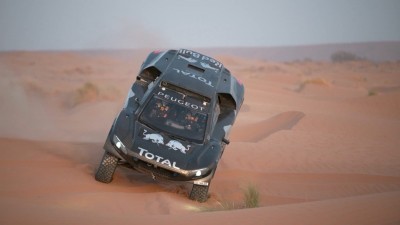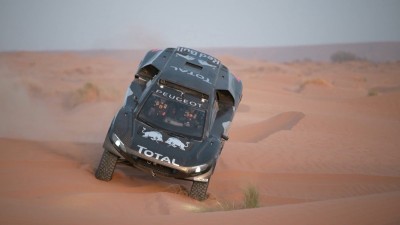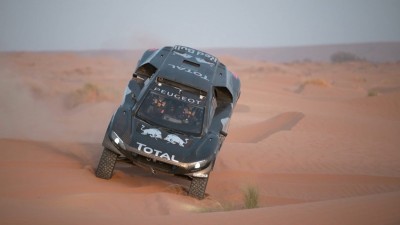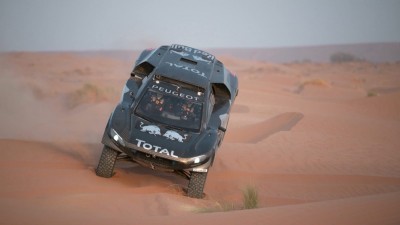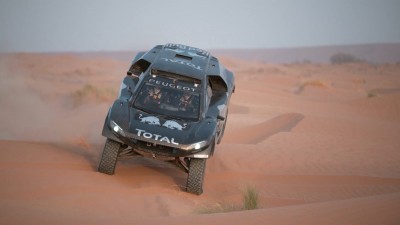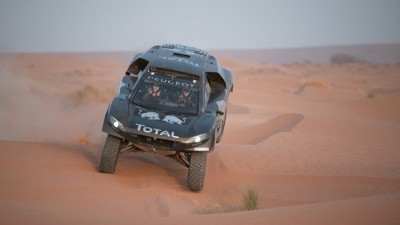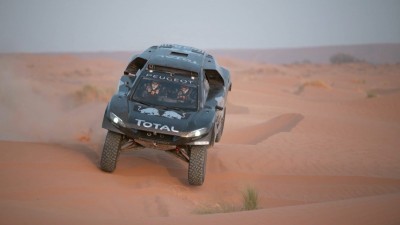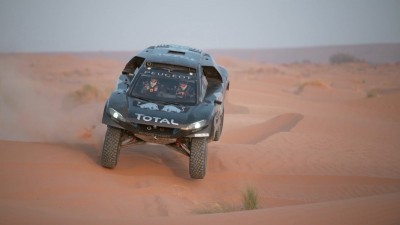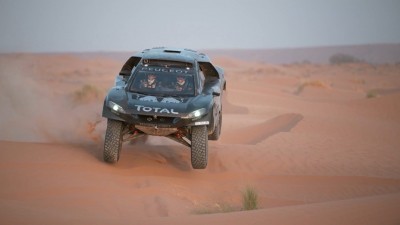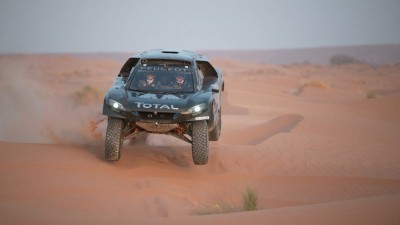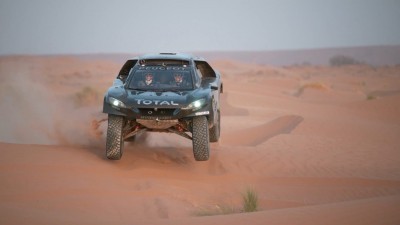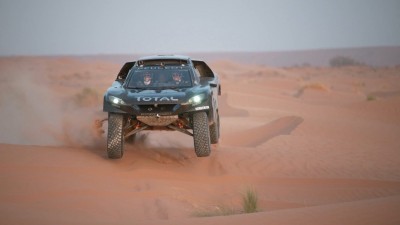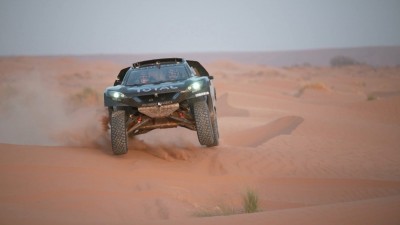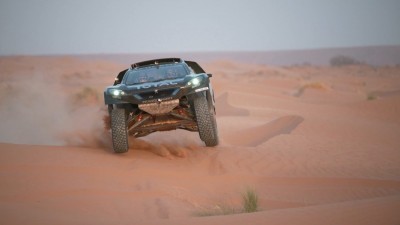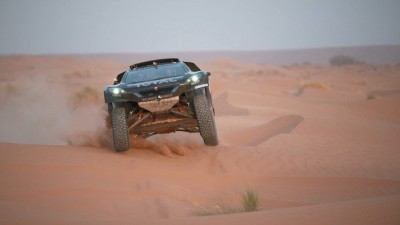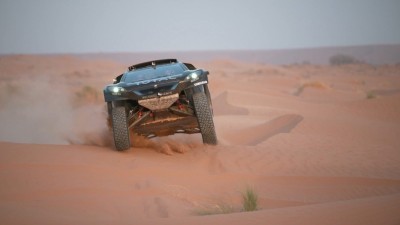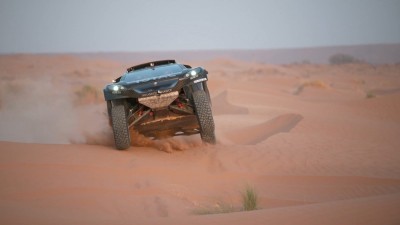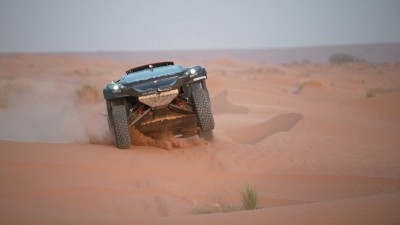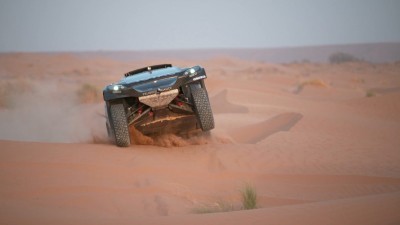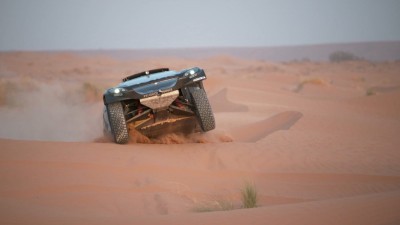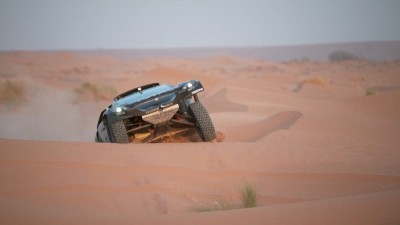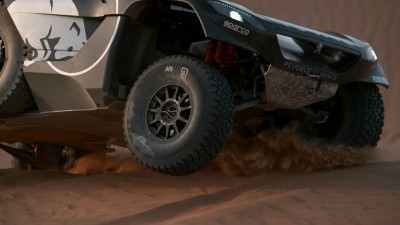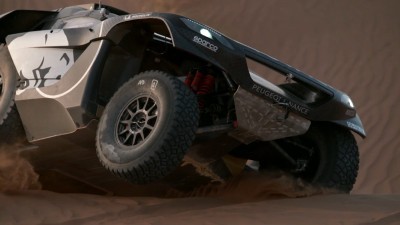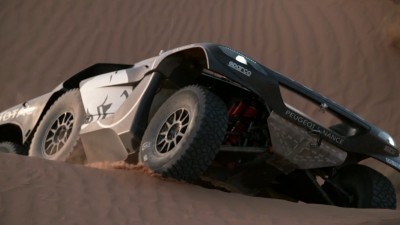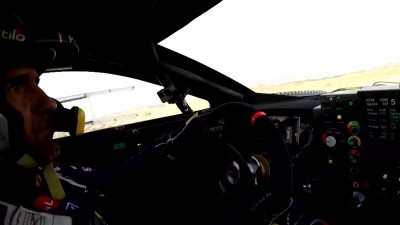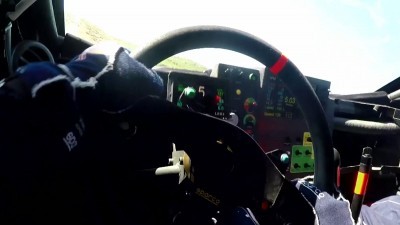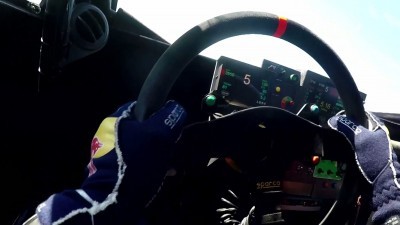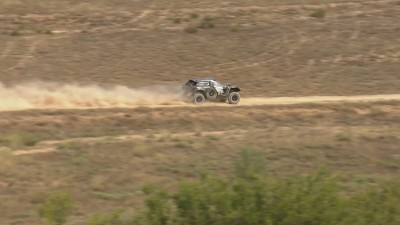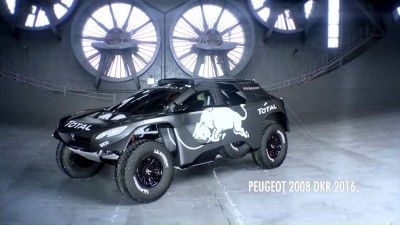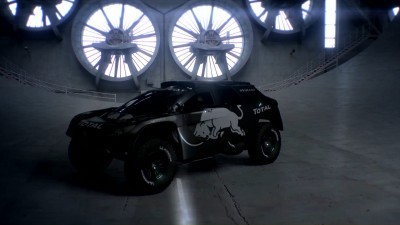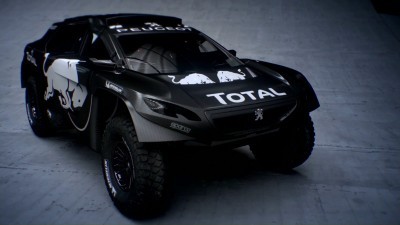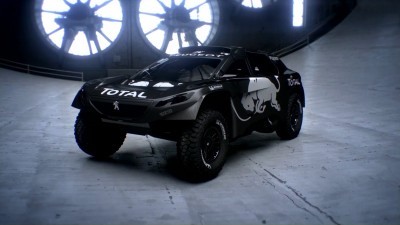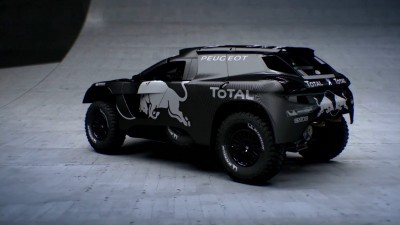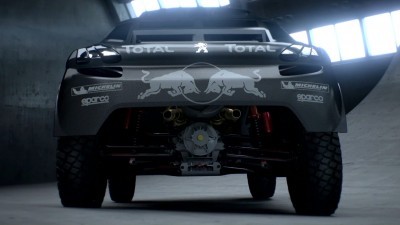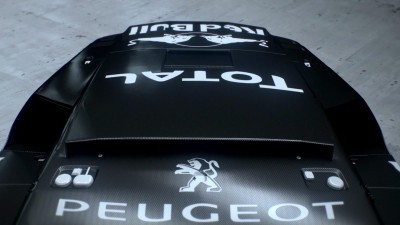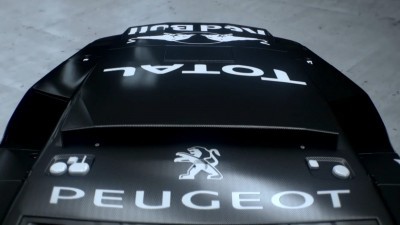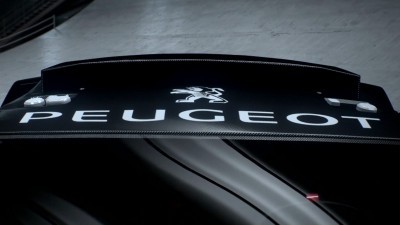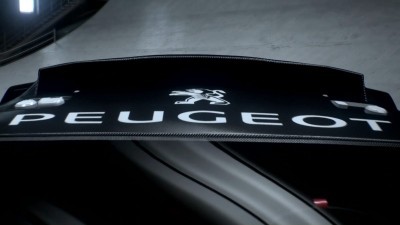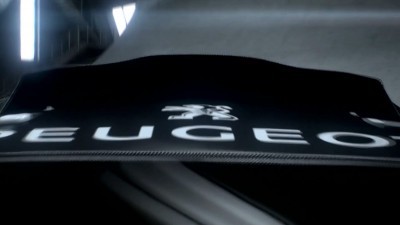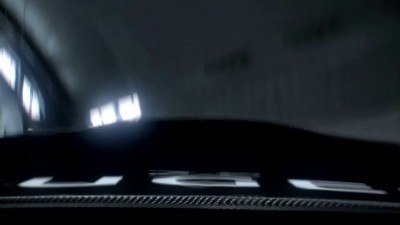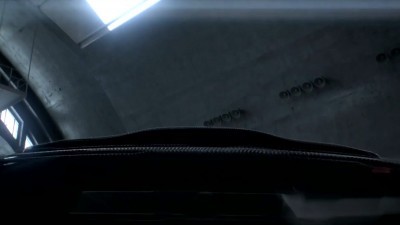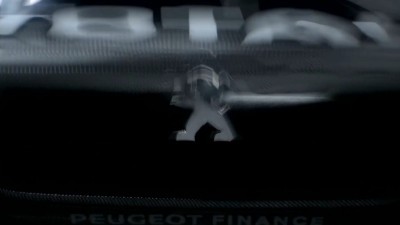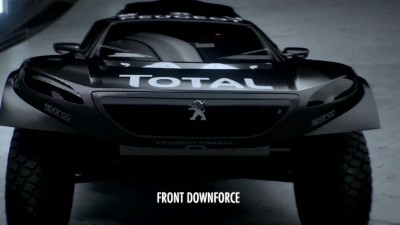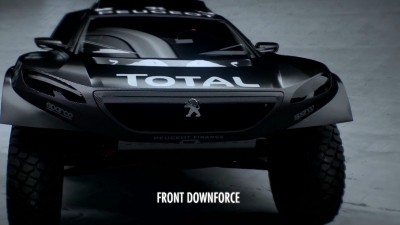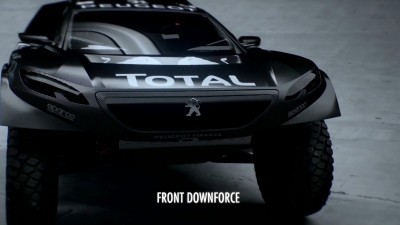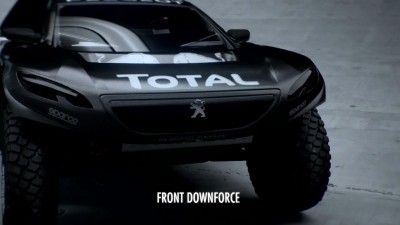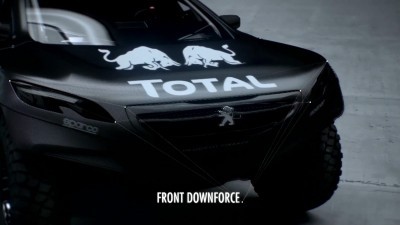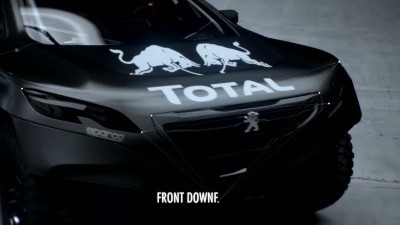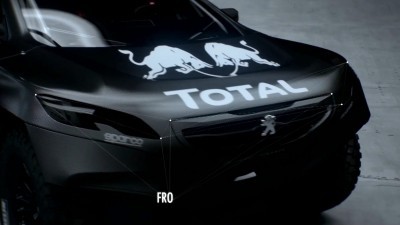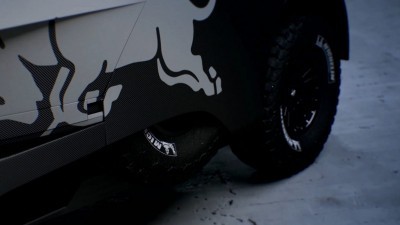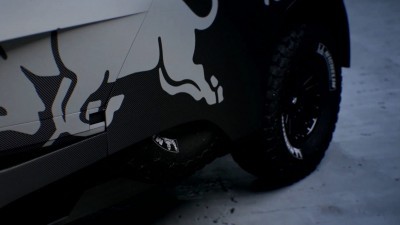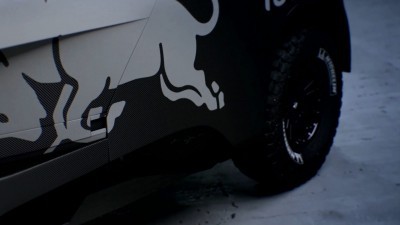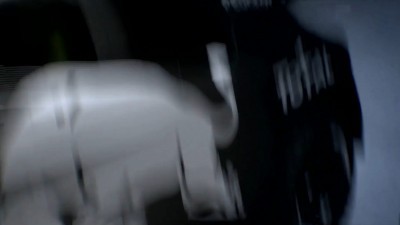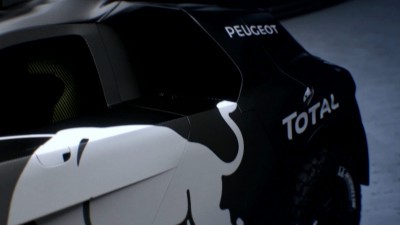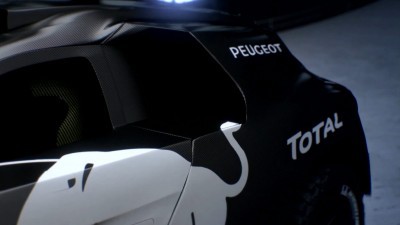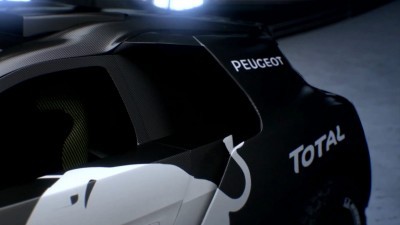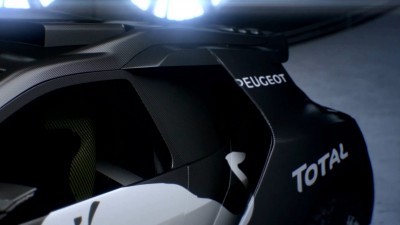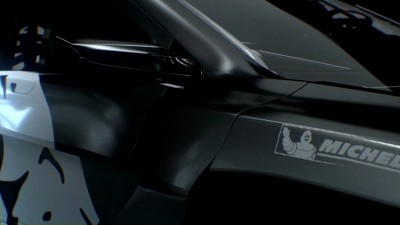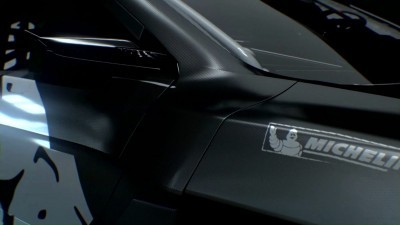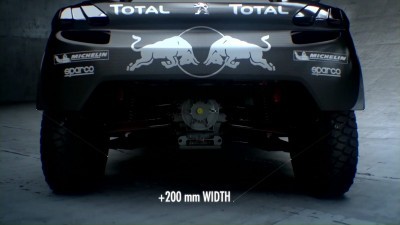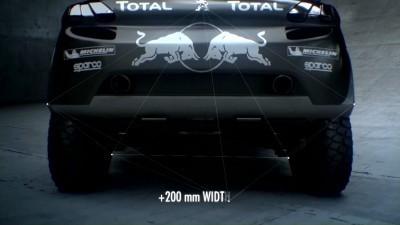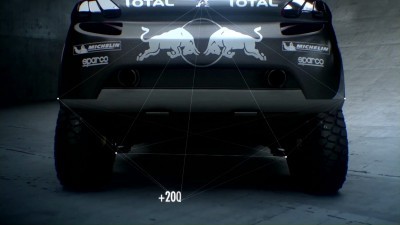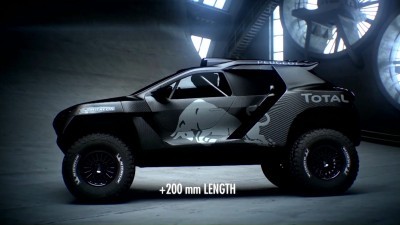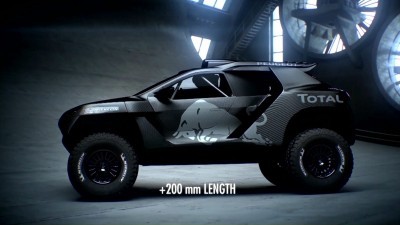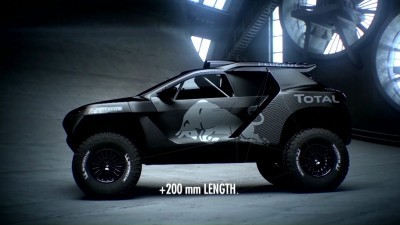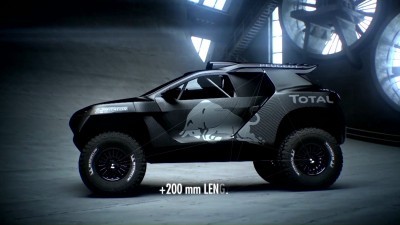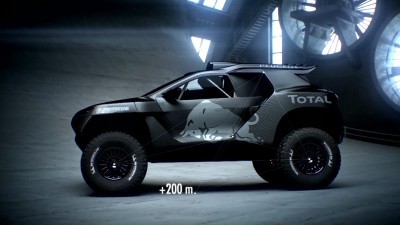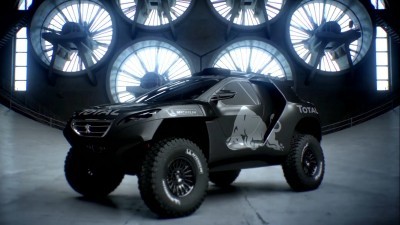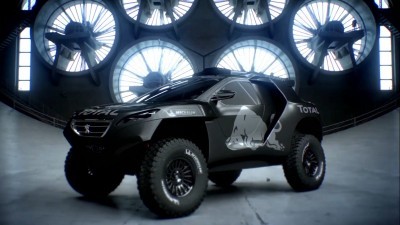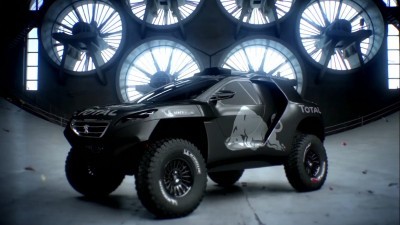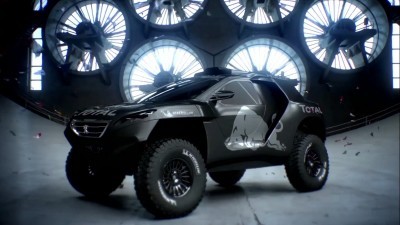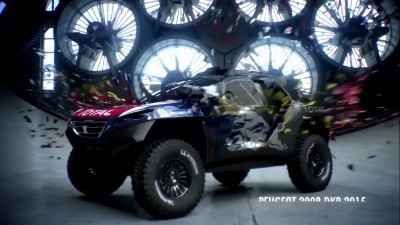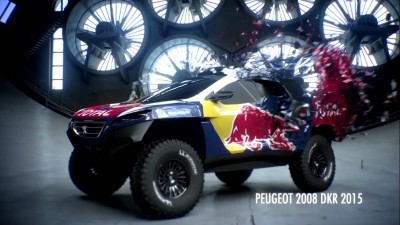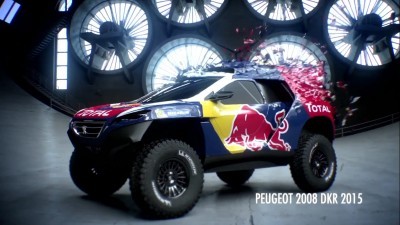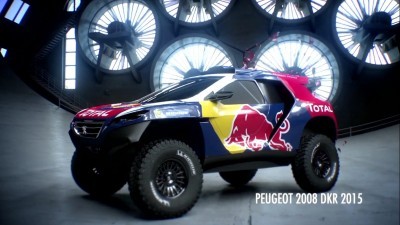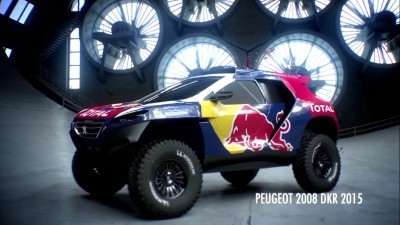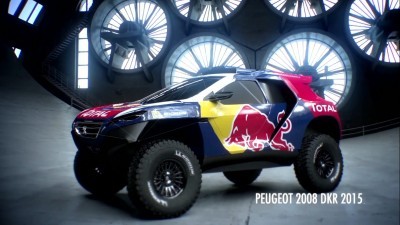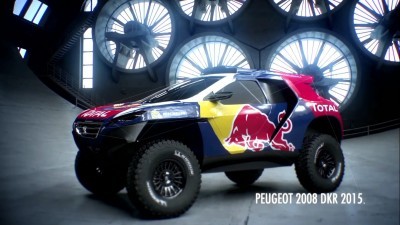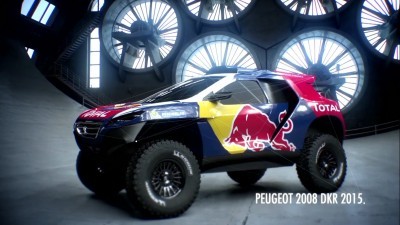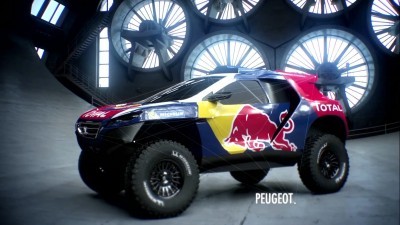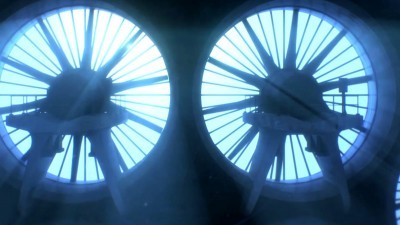Reviewing this nearly all-new 2016 Peugeot Dakar racer almost brings tears to a racer’s eye! And the blatt of the V6TT making 800Nm of torque is just the immersion to make your month.
Will this make Peugeot and Red Bull’s year down in Chile in January? You’d be a fool to bet against this breathtaking prototype from the far future.
Check out this animated evolution in GIF form showing the huge change in scale, proportions and stance for the newly-renamed Peugeot 2008 DKR16 racer.
As we scroll through the past year, the original 2015 spec became the 2015+ configuration for the Silk road China rally.
But this menace was clearly waiting in the wings: the much lower, much longer and much wider DKR16!
The transition is remarkable. A few hard landings in video footage from the final signoff testing in Morocco proves the LWB move is smart. Where the previous truck really seemed unhappy with rough landings, the new DKR16 has flow and incredible poise even in hell-on-earth dune jumps.
Favorite new design detail? The exposed rear end with big diff shining proudly is a smart refresh of Group B ideas. But the coolest new detail has to be the side intakes. Moving these from full-height scoops behind the doors has freed up the main bodywork for twin spare wheels. It has also shifted the intake up to the tophat portion of the all-carbon shell. These intakes should be able to pull in cleaner, cooler air to cool the F1 or LM-spec turbo’s inside. The look is otherworldly — so cool and badass, it almost recalls the new F-35 Raptor fighter planes. Definite jet-proven principles in the aero purity of the look. But the visuals are almost as rewarding!
The new DKR16 is a stunning racecar — and one we hope finds great success at Dakar 2016!
Watch this space for updates on the leadup and race action.
2016 Peugeot 2008 DKR16
The PEUGEOT 2008 DKR16 just got bigger – and better!
This latest evolution of the car, which is scheduled to make its competitive debut later in the year before heading to South America, is longer, wider, lower and more powerful than its predecessor: presenting a more aggressive stance, with a raft of improvements under the skin as well.
The front and rear overhangs have been reduced, enhancing the car’s go-anywhere ability. This is vital when it comes to tackling the varied obstacles such as sand dunes, river beds, and huge rocks that characterise the Dakar, making it one of the last true sporting adventures left on earth.
The PEUGEOT 2008DKR16 also benefits from improved aerodynamics: the bonnet and roof-mounted air-intake have been heavily revised, in order to provide more balanced downforce between front and rear. The new air scoop also ensures better airflow.
Other evolutions lie under its carbon skin. The suspension has been redesigned to deal more effectively with the different and rough terrains. It also benefits from better weight distribution, as well as magnesium one-piece wheels for the first time, matched to lighter tyres from Michelin. These replace the aluminium two-piece wheels from last year, with the combination resulting in a significant weight saving.
The new car has been a continual work in progress, with development work starting as soon as the original car crossed the finish ramp in Buenos Aires just over seven months ago, at the conclusion of this year’s Dakar.
Peugeot’s engineers went over their ‘Lion’ piece by piece, analysing what could be done better, with the help of its Dakar experts Stéphane Peterhansel (an 11-time winner), Carlos Sainz (a two-time world rally champion and also former Dakar winner) as well as Cyril Despres (a five-time Dakar winner on bikes).
These improvements were gradually applied and assessed through a series of tests, culminating in a one-two finish for Peterhansel and Despres on the recent China Silk Road Rally using an interim-specification car. This was essentially the 2015 model, with a number of development parts for 2016 added.
There are some surprises under the bonnet as well. Despite the air restrictor, the 3.0-litre V6 twin-turbo diesel engine now has more power. The driveability of the engine is increased too, which will be particularly useful during twisty stages.
2016 Peugeot 2008 DKR16
Actions Stills
Peugeot Sport Director Bruno Famin, overseeing the final test in Morocco to sign off the latest incarnation of Peugeot’s Dakar challenger, commented: “There isn’t one big change that we have made on our car: instead it has been a series of small evolutions in different areas, which together we hope will amount to an overall improvement. The areas we have concentrated on include bodywork and aerodynamics – as a result of which the car looks slightly different compared to last year – as well as engine and suspension, which is all under the skin. The tests we have carried out up to now, as well as our one-two finish in China recently, indicate that we are heading in the right direction. You really cannot compare our state of preparation now to how it was for our first Dakar this time last year, when everything was new to us! Of course you can never say that you are completely ready for the Dakar either because you simply never know what it will throw at you, but certainly this time we are more ready.”
Peterhansel and Sainz have driven the new car through the different phases of its development, and found it to be a useful step forward from its predecessor, providing greater driveability, power and traction.
Peterhansel, who gave the PEUGEOT 2008 DKR its first-ever overall win, in China, said: “You can really feel the difference now that the car is longer and wider, with a lower centre of gravity, because it’s a lot more stable so cornering speeds are faster. You can feel the difference in the engine as well: not only is it more powerful but also you can use all the power even at low revs. We’ve almost got a ‘problem’ now of how to manage all that power most effectively, but this is a very nice problem to have. We’re still not at the maximum of our capabilities, but testing has been very productive so far.”
Sainz stayed behind to concentrate on development work rather than competing in China. As a result, he has accumulated plenty of experience of the brand new challenger. The Spaniard added: “It’s been good testing and the car has been running really well. The potential of the car is much, much bigger than it was at this time last year and reliability has been solid too. We’ve changed quite a lot in the car in many key areas, so really we can call this one a completely new car compared to last year. I feel optimistic.”
PEUGEOT 2008 DKR16
PEUGEOT 2008 DKR16 TECHNICAL SPECIFICATIONS
ENGINE
| Type | V6 bi-turbo diesel | ||
| Cubic capacity | 2,993cc | ||
| Number of valves | 24 | ||
| Position | Mid-rear | ||
| Number of cylinders | V6 (‘vee’ angle = 60°) | ||
| Maximum power | 350hp | ||
| Torque | 800 Nm | ||
| Maximum revs | 5,000rpm | ||
| Top speed | 200kph | ||
| Lubricant | TOTAL QUARTZ 10 W 50 | ||
| TRANSMISSION | |||
| Type | Two-wheel drive | ||
| Gearbox | Longitudinally mounted six-speed manual sequential gearbox | ||
| Lubricant | TOTAL 755 HPX 80 W 140 | ||
| CHASSIS | |||
| Type | Tubular | ||
| Bodywork | Carbon | ||
| SUSPENSION / BRAKES / STEERING | |||
| Suspension | Double wishbones | ||
| Springs | Coil springs (one per wheel) | ||
| Dampers | Adjustable (two per wheel) | ||
| Travel | 460mm | ||
| Anti-roll bars | Front and rear | ||
| Steering and brakes | Hydraulic power steering | ||
| Discs | Hydraulic dual circuit, one-piece light alloy four-piston callipers | ||
| Front and rear vented discs front and rear | |||
| Front discs (diameter): 355mm | |||
| Rims | Rear discs (diameter): 355mm | ||
| Tyres | Magnesium one-piece wheels (17 x 8.5) | ||
| Michelin 37/12,5×17 | |||
| DIMENSIONS | |||
| Length | 4,284 mm | ||
| Width | 2,200 mm | ||
| Height | 1,794 mm | ||
| Front overhang | 631 mm | ||
| Rear overhang | 653 mm | ||
| Wheelbase | 3000 mm | ||
| Fuel tank capacity | 400l | ||
2016 Peugeot 2008 DKR16 Evolution
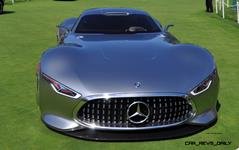
Tom Burkart is the founder and managing editor of Car-Revs-Daily.com, an innovative and rapidly-expanding automotive news magazine.
He holds a Journalism JBA degree from the University of Wisconsin – Madison. Tom currently resides in Charleston, South Carolina with his two amazing dogs, Drake and Tank.
Mr. Burkart is available for all questions and concerns by email Tom(at)car-revs-daily.com.


